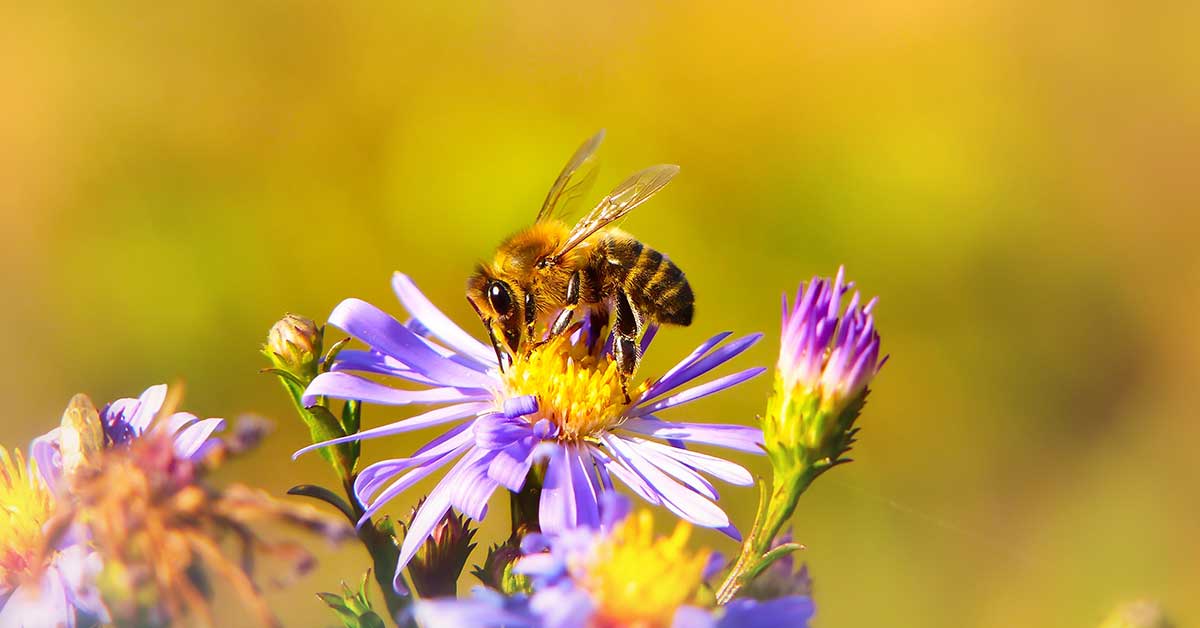It seems like everyone loves bees and other native pollinators, and for good reason. Without pollinators, we’ll have a hard time feeding ourselves! Pollinators are responsible for pollinating much of the food we humans eat. Sadly, it can be difficult to plant the flowers needed to support bees when we don’t have any space, but even if all you have is a porch, a patio, or just a small sunny spot, there are flowers that bees love that you can plant in pots. These are some of the best potted flowers that attract bees.
The best potted flowers that attract bees
I love planting flowers for the bees, but I haven’t always had the space needed for a huge pollinator flower garden outside. For years, during my apartment dwelling days, I kept these flowers in containers and moved them with me wherever I went, at least the perennials. Every spring, summer, and fall, these flowers would be absolutely covered in bees.
Bee balm
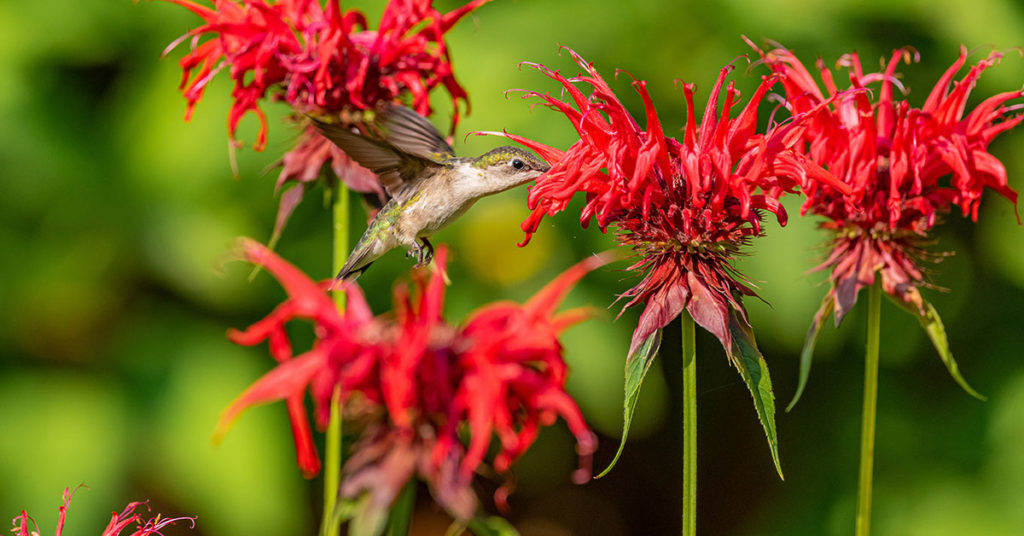
Bee Balm bushes are herbaceous perennials native to North America that are prized for their brilliant, colorful blossoms that attract bumblebees, hummingbirds, and other pollinators. Surprisingly, they’re also classified as herbs. Bee Balm is a member of the mint family with fragrant leaves and a variety of culinary and therapeutic use. It has a square stem, opposing leaves, and spreading rhizomes that spread quickly under the soil like many mints. Bee balm will grow to fill just about any size pot and is one of my favorite potted flowers that attract bees.
Red clover
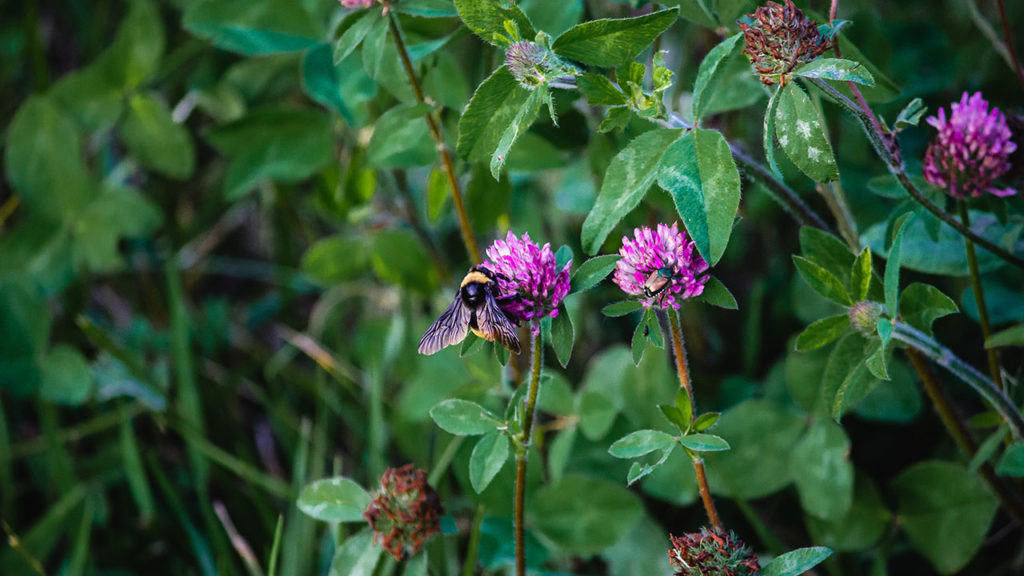
I’m a big fan of clovers, and red clover definitely has a space in any potted garden of mine. Despite being considered a lawn or pasture flower, it does okay when planted in a pot. If you have any yard space, you can randomly toss some red clover seeds around and watch them attract tons of pollinators when they flower. Red clover is generally grown in northern and midwestern states, however, it is occasionally grown as a winter annual in the Southeast. It typically grows best in chilly, wet settings, but because of its deep roots, it may survive drought better than other types of clover.
Lupine
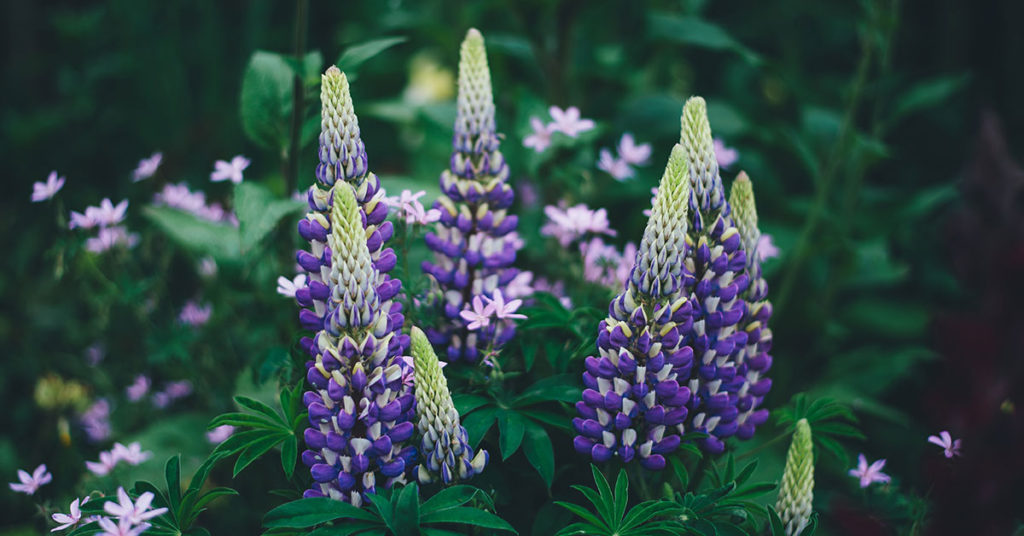
If you happen to be hiking through a lush forest in the Pacific Northwest, you might come upon a plant with star-like leaves shooting tall stalks of different colored flowers into the air. If so, there’s a chance you’ve spotted Lupine growing in its natural habitat. It doesn’t just grow out in the wild though, Lupine can be grown right at home as well. No need to hike to enjoy its beauty! It’s another potted flowers that attract bees that you can grow right on your own porch or balcony. Give this one a try! It’s simply amazing, and the bees will go nuts for it.
Lavender

My garden changes every year. I rarely grow the exact same things year after year. But lavender, which is a perennial in my region, is something I always have growing. It is one of my favorite plant choices for intensively cared-for gardens or low-maintenance landscaping. The plants are fragrant, the flowers are beautiful, and native pollinators like bumblebees LOVE them. You can plant this herb either in the ground or in a pot. It’s a no-fuss plant, through and through.
Sedum
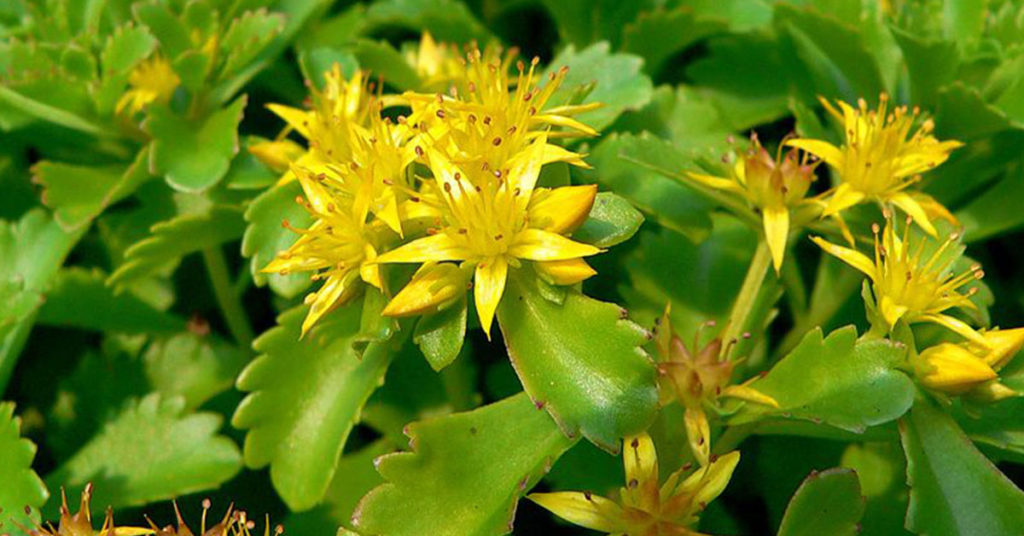
Most Sedums, also known as stonecrop, are tough, drought-tolerant succulents with thick, meaty leaves that come in a variety of hues and they’re one of my favorite potted flowers that attract bees. Sedum flowers come in a variety of colors, including white, pink, yellow, and red. Additionally, they feature little, star-shaped flowers that blossom late in the growing season. Low-growing Sedum and upright Sedum are the two types of Sedum in the huge Sedum genus.
Low-growing Sedum remains short and grows as a ground cover, but upright Sedum grows in vertical clusters and looks beautiful along borders. After the threat of frost has gone but before the summer heat arrives, the optimum time to plant Sedum is in the spring. Sedum grows at a modest rate in general, however, this varies by species and variety.
Sunflowers

Sunflowers are a little bit tough to grow in containers due to the size of some varieties. Chocolate cherry sunflowers are probably my favorite variety to grow in containers. They grow to about 6 feet tall and won’t easily tip over if you plant them in a larger container, at least 5 gallons. Sunflowers are very good for local pollinators, providing an excellent food source for them, and their seeds are easy to store.
Thyme

It’s always a good time for thyme! One of my favorite varieties of thyme to grow in a pot is red creeping thyme. Red creeping thyme, or Thymus coccineus, is the same fragrant plant used in these recipes but doesn’t quite have the same flavor. It’s a low-growing, spreading, self-seeding plant with flowers that range from pink to red to purplish-red. The plant rarely grows taller than 6 inches and a single red creeping thyme plant can spread almost two feet wide. In a pot, it will droop down the side of the container it’s planted in, partially concealing its own pot. Bees love this one!
Echinacea
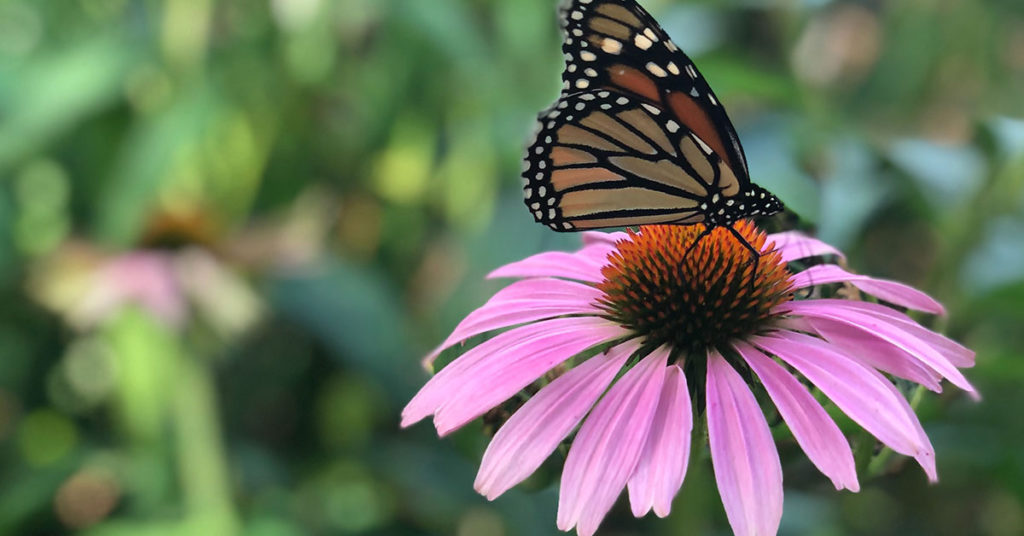
Echinacea is a lovely herb that produces beautiful, cone-like purple flowers. It’s also commonly used in herbal remedies and is often found in teas. Have you ever considered growing Echinacea? It really isn’t hard! Growing up in the midwest, we had tons of Echinacea growing in our yard. It continues to be one of my absolute favorite flowers. It’s not very difficult to grow in containers, but do know that it will thrive best when planted in the ground.
Catmint
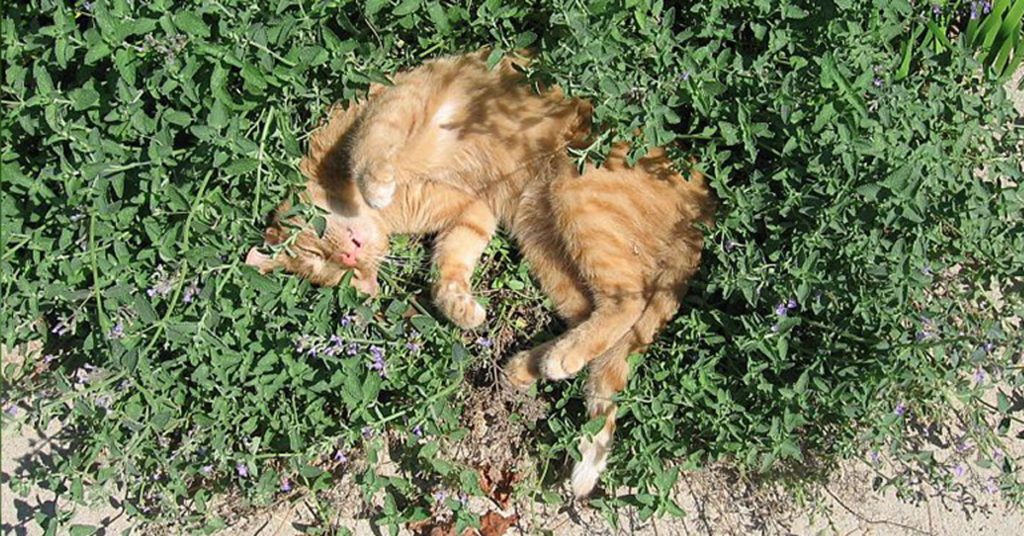
Cats in the garden are never a good thing, but if you’re not concerned about attracting kitties, this herb is a beautiful plant with flowers that pollinators like bumblebees love. Your cat will enjoy the plant, but probably won’t over-enjoy it if you catch my meaning. This plant is easy to grow and perfect for a beginner’s herb garden.
Verbena
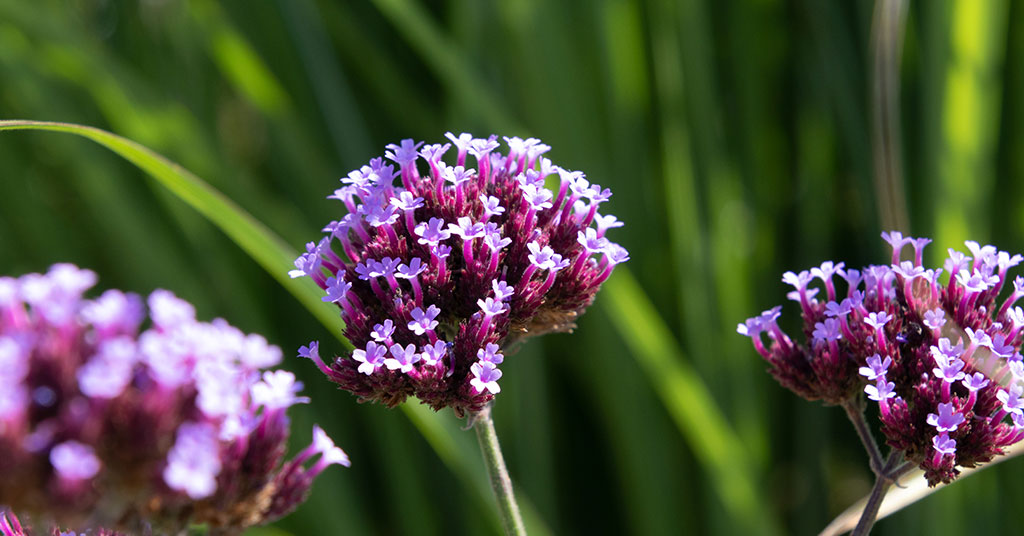
Consider growing the Verbena if you are looking for long-lasting flowers that will blossom during the harshest hours of summer heat. When placed in the brightest and probably driest section of the garden, Verbena plants, whether perennial or annual varieties, guarantee summer blossoms. Perennial Verbena will put on a stronger summer show if your area has high summer humidity. This plant does well in pots, especially if grown in a larger container. These flowers grow to be about 1 foot tall.
Lantana

Lantana plants are well-liked and cultivated in outdoor hanging baskets or as ground covers because of their distinctive vine-like appearance that sprawls from woody branches. Round clusters of tiny, vividly colored flowers, which can be yellow, orange, white, red, pink, blue, or purple, are what Lantana is famous for. The almost bright colors are frequently blended together inside the same cluster, giving the impression of two colors.
Spanish lavender
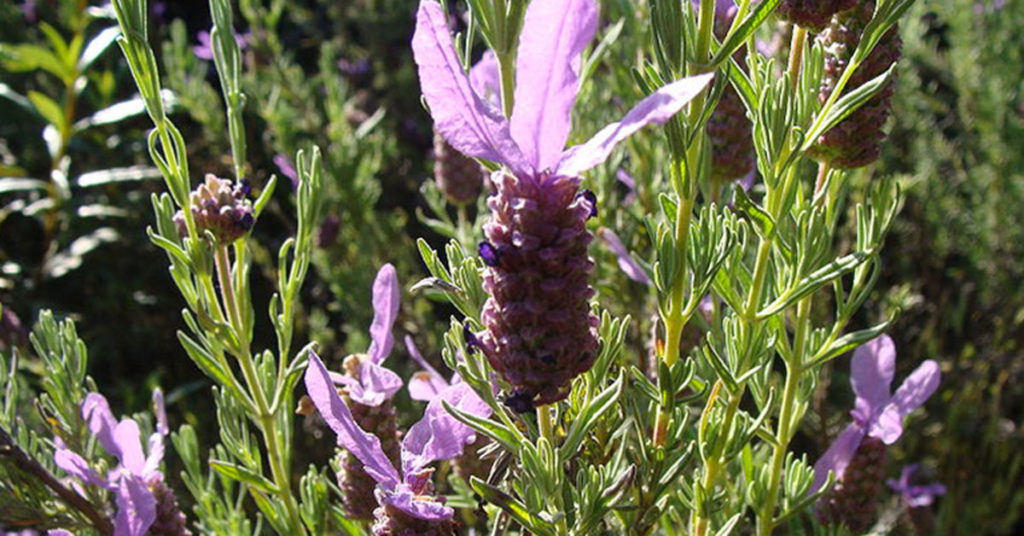
Lavender has quite possibly one of the loveliest flower fragrances a plant could produce. I can’t get enough of it. Pollinators are also very big fans of these stunning perennials. Not to mention how easy and fun it is to grow. The purple and pink flowers have very distinct “bunny ears” or tufts compared to English lavender plants.
The flowers are paired with beautiful silver-like foliage that’s firm to the touch. The flowers tend to bloom from early May and June into late summer or early fall. However, Spanish lavender is not exactly like its relative, English lavender. Spanish lavender prefers hotter climates and thrives with the sun in zones 7-10. If you live in colder climates, you may want to consider English lavender instead. In any case, this is another one of the best potted flowers that attract bees.
